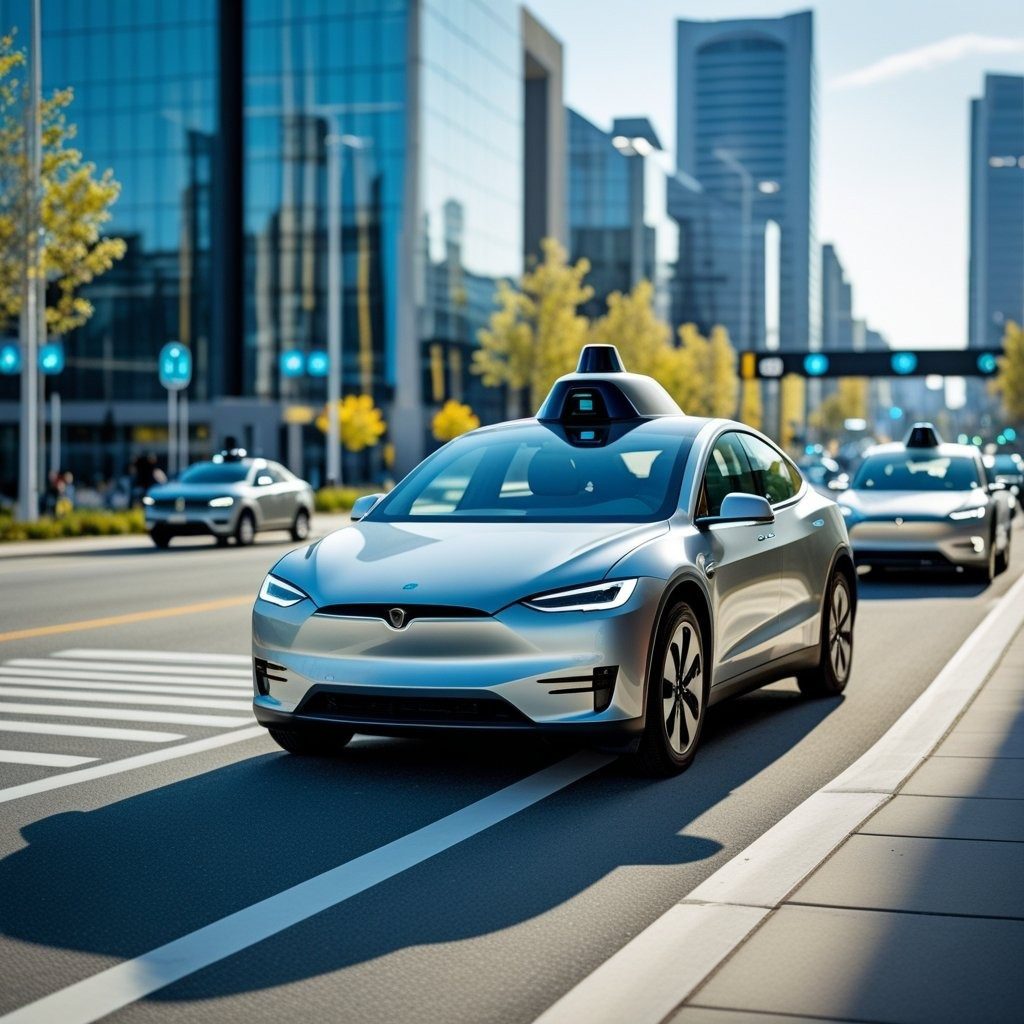Autonomous driving is a key area of development in modern transportation, promising to reduce accidents, improve efficiency, and alleviate traffic congestion. One of the central challenges in autonomous driving is decision-making — determining how a vehicle should respond to various dynamic and unpredictable scenarios on the road.
A recent study titled “Research on Autonomous Driving Decision-making Strategies Based on Deep Reinforcement Learning” by Zixiang Wang et al. explores how cutting-edge machine learning techniques, specifically Deep Q-Network (DQN) and Proximal Policy Optimization (PPO), can enhance the decision-making capabilities of autonomous vehicles.
Deep Reinforcement Learning: The Foundation of Smarter Decision-making
Autonomous driving systems rely on a variety of sensors and algorithms to perceive and interact with the environment. However, traditional rule-based decision-making methods often struggle to handle the complexity of real-world traffic scenarios. The study’s authors highlight this challenge, noting that rule-based methods depend heavily on predefined traffic rules and prior knowledge, which limit their adaptability to unexpected situations. To address these shortcomings, they propose using Deep Reinforcement Learning (DRL) to enable vehicles to autonomously learn and optimize their decision-making strategies in real-time.
In their approach, the researchers applied two powerful DRL techniques: DQN and PPO. These methods use neural networks to learn optimal driving strategies by interacting with the driving environment. While DQN estimates the expected cumulative reward for a given action in a state, PPO focuses on improving decision-making by optimizing the policy directly. By using these techniques, the model can handle high-dimensional and dynamic driving scenarios without needing explicit programming for every possible situation.
The Methodology: Testing in a Realistic Environment
The study tested the decision-making strategies in the HighwayEnv simulation environment, a highly configurable platform that simulates highway driving conditions. The authors designed the experiments to evaluate how well DQN and PPO could optimize a vehicle’s driving behavior, balancing speed, safety, and efficiency in complex traffic environments. The experimental setup involved training the models in scenarios that involved highway merging, lane changes, and other common driving tasks.
For DQN, the researchers used a convolutional neural network to approximate the state-action value function, adjusting parameters like learning rate, batch size, and discount factor. Meanwhile, for PPO, they employed fully connected feedforward neural networks, which directly optimize the policy. In both cases, the authors fine-tuned the models to ensure the stability and efficiency of the learning process.
Results: Deep Learning Outperforms Traditional Methods
The experimental results demonstrated the superiority of the DRL-based methods over traditional rule-based decision-making systems. The DQN model showed significant improvements in handling highway merging tasks, with the vehicle increasingly learning to optimize speed while avoiding collisions. Over time, the average reward associated with the task increased, signaling that the model was refining its decision-making process.
Furthermore, the PPO-based approach provided more robust decision-making by improving the quality of actions taken during more complex driving scenarios. The PPO method’s ability to avoid drastic changes in the driving policy contributed to more stable performance, especially in dynamic environments.
A key part of the study was the introduction of an advanced reward function, which balanced three critical driving goals: safety, comfort, and efficiency. The reward function penalized unsafe actions (like collisions), promoted smoother driving (reducing harsh accelerations and braking), and incentivized energy-efficient behaviors (e.g., optimizing driving speed to reduce fuel consumption). This holistic approach to reward design ensured that the models were not only effective but also capable of adapting to real-world driving conditions, such as changing weather or road surfaces.
Implications for the Future of Autonomous Driving
The findings from this study have profound implications for the future of autonomous vehicles. By demonstrating that DRL methods can effectively learn and optimize driving strategies, the authors provide a promising solution to the limitations of traditional rule-based systems. The ability for vehicles to learn from their environment and adjust their decision-making accordingly is a significant step toward achieving fully autonomous driving.
Moreover, this research shows that DRL models can be more adaptable in handling complex and dynamic traffic conditions, a key challenge for real-world autonomous vehicles. By improving the robustness and adaptability of driving strategies, these models not only enhance safety but also ensure a smoother, more energy-efficient driving experience.
As these technologies are integrated into autonomous vehicles, we can expect safer roads with fewer accidents, less traffic congestion, and greater energy efficiency. The continuous optimization of driving behavior could lead to smoother traffic flows and more sustainable transportation systems, benefiting everyone from everyday commuters to environmental advocates.
A Step Toward the Future of Mobility
In conclusion, the research by Wang et al. highlights the transformative potential of Deep Reinforcement Learning in autonomous driving. By leveraging the power of DQN and PPO, their study shows that autonomous vehicles can make more intelligent and adaptable decisions than ever before, overcoming the limitations of traditional rule-based methods. As this technology advances, it could revolutionize the way we think about mobility, leading to smarter, safer, and more efficient transportation systems in the near future.
For readers interested in staying up-to-date with the latest innovations in transportation, we invite you to explore more of our news articles. From breakthroughs in AI to cutting-edge developments in alternative energy, our collection of news stories offers a comprehensive look at how science and technology are reshaping the automotive world.
Citation:
Wang, Z., Yan, H., Wei, C., Wang, J., Bo, S., & Xiao, M. (2024). Research on Autonomous Driving Decision-making Strategies Based on Deep Reinforcement Learning. Proceedings of the 2024 4th International Conference on Internet of Things and Machine Learning, 211-215.
